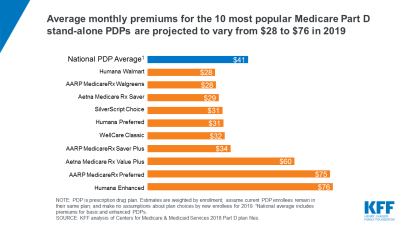 Medicare Part D: A First Look at Prescription Drug Plans in 2019
Issue Brief
Medicare Part D: A First Look at Prescription Drug Plans in 2019
Issue Brief
This issue brief provides an overview of the Medicare Part D prescription drug benefit plan landscape, with a focus on stand-alone drug plans, the largest segment of the Part D market. It includes national and state-level data on plan availability, premiums, benefit design, cost sharing, information about premium-free plans for low-income beneficiaries, and information about the top ten Part D plans for 2019.